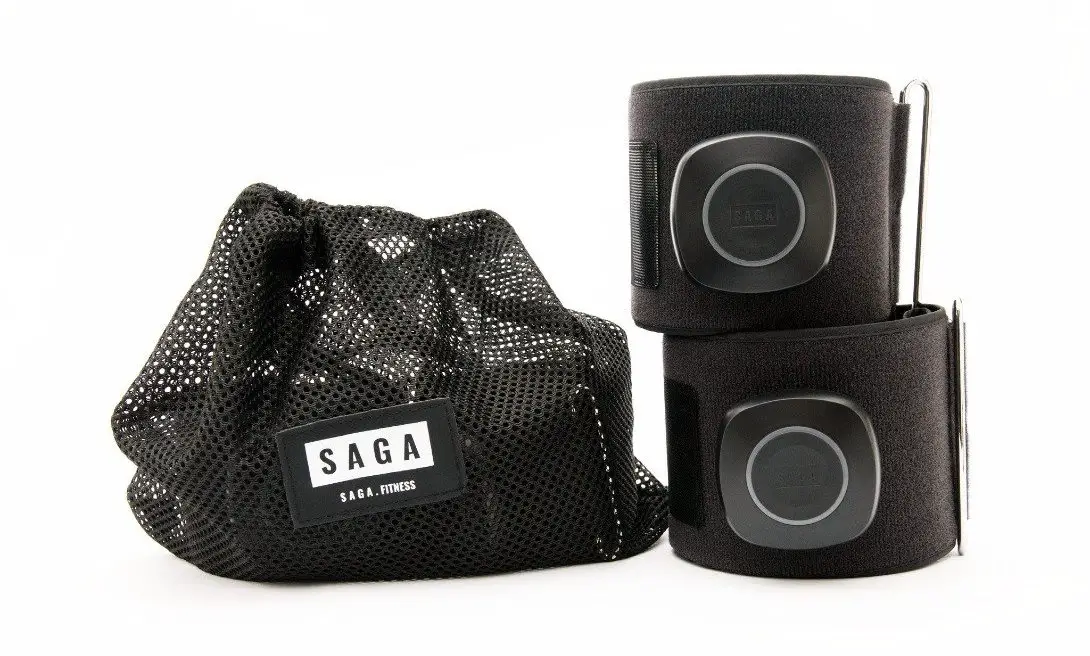Out of the recent COVID chaos apocalypse certain people, products and services have found themselves in the perfect environment to evolve and flourish, changing the world around them for the better; as they say ‘Necessity is the mother of invention.’ The world of fitness has certainly been hit hard by the pandemic, with gyms, classes and personal trainers taking it directly on the nose. People started training at home and training equipment was flying off the shelves faster than it could be replaced and instructor led training sessions adapted by going online. This growing home built ‘Garage Gym’ or ‘training-in-the-spare-bedroom’ culture brings with it certain pros and cons… No time costly commutes to the gym, monthly overpriced subscription, sweaty testosterone fuelled crowds and no queuing for the oversubscribed bench press. However, on the other hand a lack of space for storing equipment and certain exercises, no personal trainers to push you to the edge and beyond and you have to invest in the equipment if you can squeeze into your spare bedroom. Luckily, I have trained at home for many years preferring my early morning ‘Me Time’, blasting out AC/DC to spur me along. However, it does require discipline to keep evolving the training sessions and it certainly needs some determination to push the body and the mind. So, anything that can assist in the eternal search of fitness, health and ultimately to look like some kind of Avenger, whether it be Thor or Captain America, then I am all ears… and biceps, triceps, abs, quads, pecs…So, my latest discovery has got me very excited indeed. ‘BFR’ training or rather ‘Blood Flow Restriction’ training sounds like some kind of mediaeval torture, however this is far from the truth. First discovered by accident in 1966 in Japan by the 18 year old student Yoshiaki Sato whilst he attended a Buddhist festival. After kneeling for a long time he realised his calves felt similar to the pump he felt after weight training so he proceeded to explore this idea further with bicycle inner tubes – sounds safe! It became known as ‘Kaatsu’ training meaning ‘under pressure’. Over time the idea of Kaatsu or Occlusion training travelled and evolved with each practitioner. One of the problems was making sure the cuffs or bands were tight enough to restrict blood flow but not so tight as to completely stop it, and of course achieving consistent pressure on each limb and at every session was a problem that only experts could achieve. Of course eventually technology comes along and fills the gaps and discrepancies. Finally SAGA Fitness have come through with a ingenious method to make BFR training safely available for virtually anyone. The SAGA BFR cuffs are the world’s first wireless, auto-inflating BFR cuffs that intelligently calibrate to your personal safe level of blood restriction, all controlled through your smartphone. But what do the cuffs actually do for you? In layman terms they cause a localised hypoxic (Low Oxygen) environment leading to faster muscle fatigue thus increasing muscle strength, muscle size, improved aerobic capacity and accelerated recovery all utilising much lighter weight loads than used in heavy weight lifting.Arnie famously came up with the term ‘The Pump’, this is when the muscles swell due to lifting heavy weights, blood and plasma enter the muscles during training but due to cells swelling the blood and plasma remain in the muscles not being able to leave at the same speed that they enter. The body reacts with a protective stress response by adapting and growing the muscles over time so it can deal with the situation in the future. BFR cuffs mimic this effect by trapping the blood and plasma in a similar manner. The increase in muscle oxygen demand means the muscles have to work harder to contract even with very light weights. The use of light loads are integral to physiotherapists in the world of rehab, with hundreds of science research papers, it has become clear that this technique is so valuable when bringing people back from all sorts of injuries such as ACL reconstruction, inflammatory myopathies, knee Osteoarthritis to name but a few. Particularly important in the early days of immobilisation after injury or surgery, BFR can help reduce atrophy, the loss of muscle and strength, without placing force on the joints or the body in general; of course this also has a role to play in the old, who may have muscle wastage too. When used properly BFR cuffs result in very similar muscle size and strength gains as with heavy weights whilst only using 20-30% of the one repetition maximum weight. So for example say you can do only one squat with 60kg, with BFR you would only need to lift 12-18kg. I like the idea of this, for when I start to go too heavy on a squat, I tend to get injuries or tweak muscles.This reduction in blood flow and change in energy demand increases the speed of fatigue and recruits ‘Fast Twitch’ Type 2 muscle fibres much sooner; usually it takes time, heavy weights and some hard graft to recruit the Type 2 fibres. Ultimately the ‘Fast Twitch’ Type 2 fibres are the muscles to hit when looking for hypertrophy (Muscle growth) and strength gains as used by weightlifters and sprinters. BFR training accelerates the time required for low loads to be perceived as heavy.
The SAGA cuffs automatically measure your ‘Limb Occlusion Pressure’- the level at which pressure stops the blood flowing in and out of the limb and then works out what percentage to work at for the legs or arms; this is usually at 40-50% for the upper body and 50-80% for the lower body. This is all controlled through an app on your smartphone, where you can select the BFR cuffs, calibrate the pressure and tweak it if required. Is there any risk to BFR training though? There is large evidence that says there is no risk for most people when followed correctly, however there are levels of risk for people with various predetermined health situations such as pregnancy, thrombophilia, infection, diabetes, cancer etc. As well as weight training the SAGA cuffs can be used during aerobic exercise to increase your V̇O₂ max – the maximum rate of oxygen consumption measured during exercise of increasing intensity; in other words your fuel efficiency . . . basically they make you more fit! Typically the SAGA cuffs have been used in cycling, rowing, walking and running but you could turn your hand, arms and legs to all sorts of training from HIIT, Tabata, Crossfit to boxing and even my Skiers Edge machine; WOW they made my thighs burn. During these cardio sessions the body has to work much harder resulting in improved maximal aerobic capacity and the burning of far more calories than usual. The science has also shown that BFR training has a few other positive effects on the body such as improved tendon performance (usually only acquired through heavy weight training), increased blood lactate concentration which is the main stimulus for the exercise induced growth hormone response, they produce an Hypoalgesic effect which is basically pain relief, bone density improves similar to when lifting heavy loads or performing plyometrics and it also improves muscle force and velocity i.e. you can jump higher with more speed! Note – it is advised that one should have 3-4 week breaks now and again from BFR training.
So how did the SAGA BFR cuffs perform during training? See Part 2 to find out how I got on with the SAGA cuffs during my training . . .

